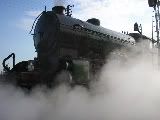Postby Hasbeen » 05 Sep 2010 15:34
Rob, those were recommended to me nine years ago, when I was trying to cure a flooding problem. I found they were no better, or worse than traditional float chamber needles & seats. They had no effect on my flooding, which was caused by too much pressure from the pump.
With your problem I would first check what pump pressure you have. It should be near to, but not above 2 PSI. Any more, & your carbs will flood, [probably the front one], & much less can give starvation. Yours may be low. Your car should run OK with these float valves if everything is OK.
To make it better, read on.
When I was racing [back in the old days], our SUs still had copper floats, with a tang on them, or a copper fork, which operated the needle. By bending the tang we could adjust our float level.
For competition we used to run with the petrol 1/32" below the top of the main jet. For road work, somewhere between 3/32" & 1/4" will be fine, but you do want the level close to the same in each carb.
To check the level, if you have the stock pump, run the engine for a little while, then turn it off. Remove the dashpot, & piston, being very careful not to bend the needle, when you put them down.
Now look down into the jet, [where the needle goes], to see the level of fuel in it. If fuel is welling out above the jet, your float level is too high, or your carb is flooding. With your new valves fitted, you should only have flooding if your pump pressure is too high.
The only simple adjustment of float level in these late SUs, with plastic floats is adding, or removing washers as you found had been done on your car. A too high float level may be corrected by adding 2 or 3 more washers, & vice versa. I'd use a little thread tape if no washer is used.
Now Triumph were a bit cheep, in fact very lousy when they built our cars. Once again in the old days, the float bowl on SUs were set at different angles to the body of the carb to allow for the angle to horizontal of the motor instillation. The front carb bowl was angled down a bit, & the rear was up a bit. [Next time you see a TR3 or 4, or a Morgan +4, with the same engine have a look at their carbs].
With our cars, to save a couple of dollars/pounds, they didn't bother. If you look down the main jet of the rear carb, you will probably not see any fuel, as it is too far down, due to the downward slope of our engines, not corrected on the carb.
To correct this [the back carb needs most work] you can modify, [by grinding at an angle], the spacer where the float bowl bolts onto the carb. You can also put your valve in a lathe, & machine the shoulder, [& the top of the thread] down a bit, & re-thread right to the shoulder. What ever you remove will be the amount you raise the float level.
All of this will make the thing better, but you should not require any of it for successful road work. Check that pressure, & or go back to the old style needles.
I have done all the above on my 7s, & it does make them go better.
Hasbeen
PS. As Beans says, it is not normal, but would work to raise the level of the back carb, & is the sort of thing I just may do, as a short term "fix", & never get back to to fix properly.
H














